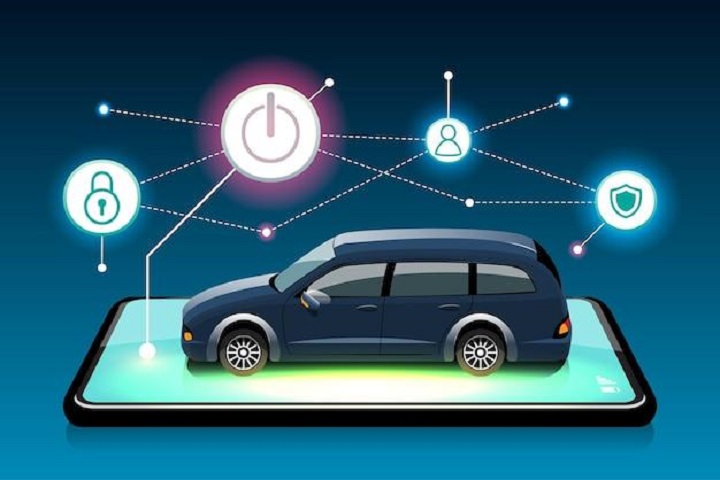Insurance
5 Predictions About The Future Of Car Connectivity
In this blog post, we’ll take a look at five predictions for car connectivity that we think you should know about.

The future of car connectivity is bright and full of possibilities. As we move closer and closer to an era where cars are autonomous and connected, there are several exciting developments on the horizon for car owners and manufacturers alike. In this blog post, we’ll take a look at five predictions for car connectivity that we think you should know about.
Table of Contents
1. Car Connectivity Will Get Even Better
In the future, car connectivity will get even better. Many experts believe that we will see more autonomous cars and more connected cars shortly. This is because the technology to connect cars is already available, and it is getting better and better.
One of the ways that car connectivity is getting better is through the use of 5G wireless technology. 5G wireless technology has the potential to provide much faster internet speeds than what we currently have available. This means that you will be able to access your emails, social media platforms, and other online content much faster while driving.
Another way that car connectivity is getting better is through the use of sensors. These sensors are used to monitor various aspects of a car’s environment, such as its temperature, humidity, and fuel level. This information can then be used by the car’s software to make decisions about how to operate it.
Overall, car connectivity is continuing to improve at a rapid pace. This means that you will be able to enjoy all of the benefits that this technology has to offer shortly.
2. The Future of Car Sharing
The future of car sharing is looking bright. The technology that enables car sharing is becoming more and more commonplace, making it easier for people to access cars when they need them. There are several reasons why this is happening, and the trend is likely to continue.
One reason car sharing is on the rise is that it’s becoming more affordable. Car-sharing companies like Zipcar and Uber operate on an economy model, where users share rides instead of renting cars outright. This makes car sharing much cheaper than traditional rental options, which means that more people are starting to use it.
Another reason car sharing is growing in popularity is that it’s eco-friendly. Instead of driving their cars, people can take advantage of car-sharing services to reduce their carbon footprint. This not only saves them money but also helps protect the environment.
Overall, the future looks bright for car sharing. It’s continuing to grow in popularity due to its affordability and eco-friendly benefits, and there’s no doubt that it will continue to do so in the years to come

3. Self-Driving Cars Aren’t So Tesla-Centric After All
As self-driving cars start becoming a reality, it’s important to remember that they won’t be exclusively Tesla-centric. Ford Motor Co. has been working on its own self-driving car technology for years now, and GM has announced plans to create a network of self-driving cars that will operate as part of a “cradle to grave” ecosystem.
This means that there are several companies out there working on self-driving car technology, and the race to become the first to market will likely be fiercely competitive. However, regardless of which company wins the race to market, it’s clear that self-driving cars are going to change the way we commute forever.
4. Electric Cars Aren’t the Only Ones on the Rise
Electric cars are certainly on the rise, but other types of vehicles are also seeing increased popularity. Vehicle-to-vehicle communication (V2V) is one technology that is gaining a lot of attention, as it could lead to some major improvements in safety.
Vehicle-to-infrastructure (V2I) is another technology that is becoming more popular, as it allows drivers to get information about traffic conditions or weather updates without having to pull out their phones. Both V2V and V2I have the potential to improve safety and make driving more convenient.
5. The Future of Car Connectivity
The future of car connectivity is full of potential. Manufacturers are now building in more and more features to make the driving experience smoother and more efficient, especially when it comes to connected cars. Wireless technology has made great strides over the last few years, and many companies are brewing up innovative new ways to connect vehicles.
Some experts believe that we’ll see a’smart revolution’ in automotive technology where all cars will be connected by 2020. This would include devices like sensors that can read road conditions, mapping software that can provide directions, and even air conditioning systems that could be controlled remotely. Some automakers already have prototypes of this type of system in development.
6. The Impact of the Internet of Things on Car Connectivity
The future of car connectivity is still being explored, but there are a few predictions about how it will change the way we live and work. For one, the Internet of Things (IoT) will play a huge role in connecting cars and other devices. Not only will they connect, but they’ll also be able to exchange data to make interactions more seamless. This could lead to new ways of managing our transportation needs, as well as provide a wealth of new insights into how we’re using our vehicles.
Another prediction is that we’ll see a shift away from standalone vehicles. Instead, fleets of small, connected cars with continuous thermal monitoring will be commonplace. This would allow for more efficient use of resources and improved safety due to the increased monitoring capabilities. It’s also possible that this system will eventually replace the need for personal automobiles altogether.
Whatever the case may be, it’s clear that car connectivity is going to continue evolving at an impressive pace in the years ahead. We can only wait to see what developments crop up next!
Conclusion
Looking into the future, it’s easy to see that car connectivity will only continue to grow in importance. With more and more people relying on their cars for transportation, it becomes increasingly important for manufacturers to provide drivers with a variety of options for staying connected while behind the wheel. From hands-free phone use to streaming music and videos, car connectivity has truly become a one-stop shop for keeping drivers entertained and informed. So what other exciting possibilities await us in the years ahead? Only time will tell!
Business
Top 10 Risks Faced by Plant Machinery Owners and How Insurance Can Mitigate Them
We will explore the top 10 risks faced by plant machinery owners and delve into how insurance plays a crucial role in mitigating these challenges.

Plant machinery owners operate in a dynamic and demanding environment where risks are inherent. These risks, if not managed effectively, can lead to significant financial losses, operational disruptions, and safety concerns. In this article, we will explore the top 10 risks faced by plant machinery owners and delve into how insurance plays a crucial role in mitigating these challenges.
Table of Contents
1. Equipment breakdowns:
Plant machinery is susceptible to breakdowns due to various factors such as wear and tear, electrical issues, or mechanical failures. Plant insurance coverage can provide financial protection by covering the costs of repairs or replacements, minimizing downtime.
2. Property Damage:
Natural disasters, accidents, or unforeseen events can cause property damage to machinery and facilities. Insurance policies tailored for plant machinery owners can offer coverage for property damage, facilitating swift recovery without crippling financial setbacks.
3. Business Interruption:
Downtime resulting from equipment failures, accidents, or other disruptions can lead to substantial revenue losses. Business interruption insurance helps plant owners recover lost income during periods of halted operations.
4. Employee Injuries:
The heavy machinery environment poses risks to workers, making the likelihood of accidents and injuries higher. Workers’ compensation insurance is essential to cover medical expenses and lost wages, protecting both the employees and the business.

5. Regulatory Compliance:
Plant machinery owners must adhere to strict regulatory standards. Failure to comply can result in fines and legal consequences. Insurance policies can include coverage for legal expenses and fines associated with regulatory non-compliance.
6. Cybersecurity Threats:
As plant machinery becomes more interconnected, the risk of cyber threats increases. Insurance coverage against cyberattacks can help plant owners recover from data breaches, system disruptions, and potential financial losses.
7. Supply chain disruptions:
Global events, trade issues, or natural disasters can disrupt the supply chain, affecting the availability of critical components. Insurance can provide coverage for losses incurred due to supply chain interruptions, ensuring continuity of operations.
8. Environmental Liabilities:
Plant machinery owners may face environmental risks associated with emissions, waste disposal, or accidental spills. Environmental liability insurance helps cover the costs of cleanup, fines, and legal actions stemming from environmental incidents.
9. Market Fluctuations:
Economic uncertainties and market fluctuations can impact the demand for products and services. Insurance products like business interruption coverage can assist plant machinery owners in navigating financial challenges during periods of economic instability.
10. Employee Dishonesty and Theft:
Internal threats, such as theft or dishonest actions by employees, can lead to financial losses. Fidelity insurance can safeguard against losses resulting from fraudulent activities within the organization.
As a plant machinery owner, anticipating and mitigating risks is paramount. Insurance serves as a crucial tool in the risk management toolkit, providing financial protection, ensuring compliance, and promoting business continuity. By understanding and addressing these risks, plant machinery owners can safeguard their investments and cultivate a resilient and sustainable operation.
-

 Instagram4 years ago
Instagram4 years agoBuy IG likes and buy organic Instagram followers: where to buy them and how?
-

 Instagram4 years ago
Instagram4 years ago100% Genuine Instagram Followers & Likes with Guaranteed Tool
-

 Business5 years ago
Business5 years ago7 Must Have Digital Marketing Tools For Your Small Businesses
-

 Instagram4 years ago
Instagram4 years agoInstagram Followers And Likes – Online Social Media Platform
















